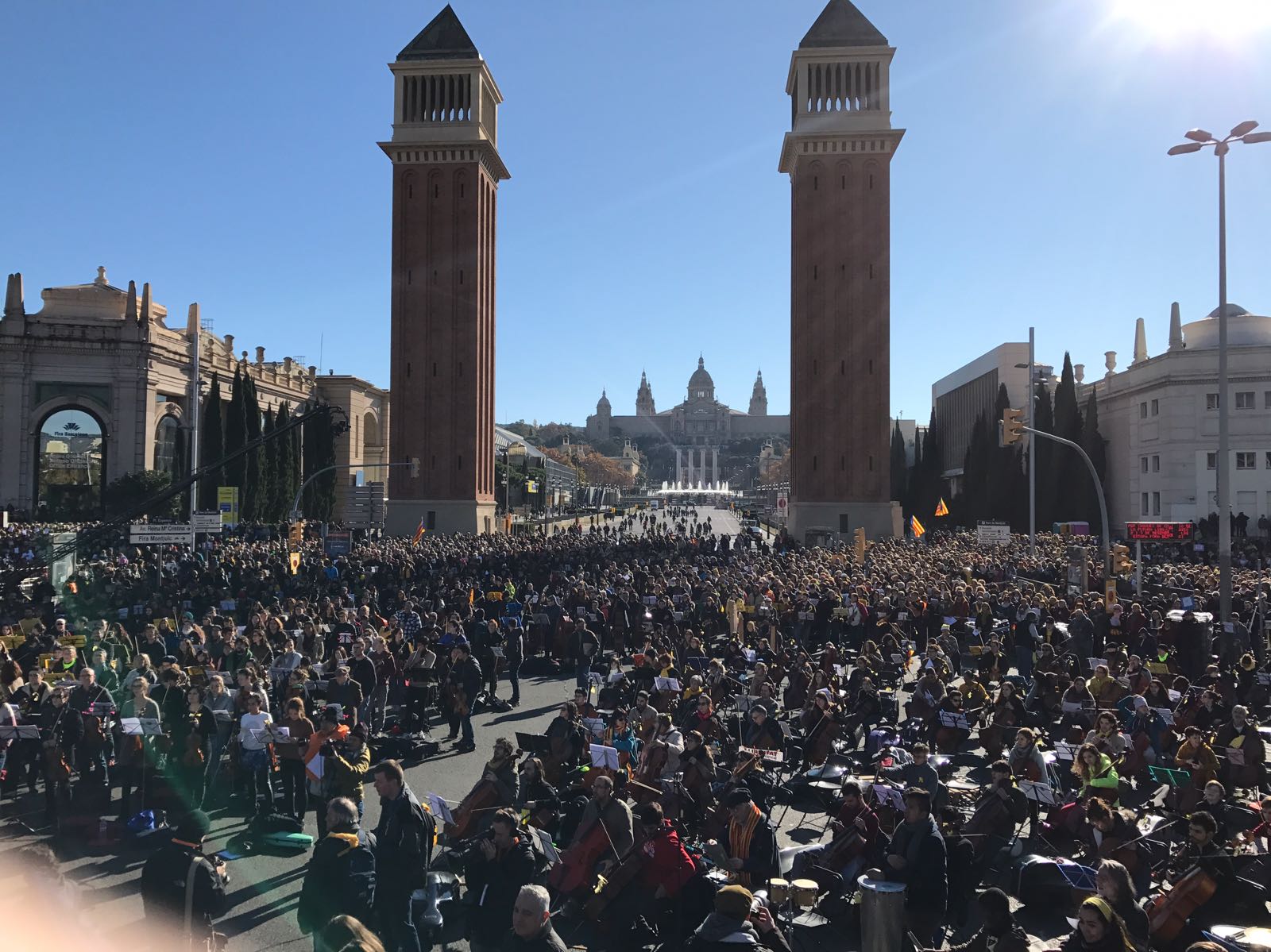Catalan cultural groupings Musicians for Freedom and Òmnium Cultural filled a Barcelona square with 10,000 classical musicians and choral singers on Sunday in an act to call for the freedom of the Catalan political prisoners held in Spanish prisons. The multitude of participants at the performance in the Barcelona's Plaça Espanya showed their support to the prisoners and protested against the imposition of article 155 with cries of "freedom".
Introducing the event, Marcel Mauri, vice president of Òmnium, said that 10,000 musicians were singing for the freedom of political prisoners because of a "democratic disgrace" in a country where, "while the extreme right is able to enjoy total liberty, we have ten peace-minded people in prison". Mauri thanked the participants for offering their music in the service of freedom. He emphasised that "music is dialogue", and affirmed that in the face of a deaf Spanish state we "will continue constructing a free country". Finally, he concluded that "the solidarity of the Catalans can bring down walls".
La primera peça del concert és “Sant Martí del Canigó”, de Pau Casals. La seva melodia omple tota la plaça Espanya amb un desig de llibertat #LlibertatPresosPolítics pic.twitter.com/4qyTh8z8PB
— Cultural Òmnium (@omnium) 3 of December 2017
The concert was made up of six pieces: Sant Martí del Canigó, composed by Pau Casals; El cant de la senyera, by Lluís Millet and Joan Maragall; two songs written by Lluís Llach; the European anthem, by Beethoven and Schiller —sung in the Catalan version with lyrics by Joan Maragall - and, to finish, the Catalan national anthem Els segadors.
Els més de 10.000 músics interpreten “El Cant de la Senyera”, de Lluís Millet i Joan Maragall en una plaça Espanya plena#LlibertatPresosPolítics #MLL3D pic.twitter.com/8mAehXlCXT
— Cultural Òmnium (@omnium) 3 of December 2017
The first theme, Sant Martí del Canigó, was introduced with a dedication to legendary Catalan cellist Pau Casals, who composed it in 1943 when he was in exile in France, taking inspiration from another major Catalan cultural work, the eìc poem Canigó, by Jacint Verdaguer. This was followed by a Catalan choral classic: El cant de la senyera, composed as an anthem for the most famous Catalan choir, the Orfeó Català, with lyrics in praise of the Catalan flag.
Una de les peces més conegudes de Lluís Llach, L’Estaca, és cantada pels músics i el públic al concert multitudinari dels Músics per la Llibertat! #LlibertatPresosPolítics #MLL3D pic.twitter.com/zVAHhSpYh7
— Cultural Òmnium (@omnium) 3 of December 2017
The choral voices had further protagonism with the singing of two of the best-known works by singer-songwriter Lluís Llach, L'estaca, followed by Viatge a Ítaca.
Continua el concert amb el “Viatge a Ítaca”, de Lluís Llach #LlibertatPresosPolítics #MLL3D pic.twitter.com/bTcohy9Hy8
— Cultural Òmnium (@omnium) 3 of December 2017
The Anthem to Europe, based on Beethoven's 'Ode to Joy' with, in this case, lyrics by 19th century Catalan poet Joan Maragall, was the piece chosen to make the 10,000-strong band's message resound with European authorities.
Volem que la nostra veu i la nostra música arribi ben lluny. L’himne d’Europa comença a sonar a la plaça Espanya de Barcelona. #WakeUpEurope

